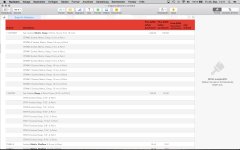sancho57
Member
- Joined
- Jan 13, 2011
- Messages
- 7,090
I started inventorying my tools. I used a spreadsheet using nomenclature, p/n and s/n. Then I took photos.
So how do you inventory the bits the accessories. I thought about it and thought maybe go to the Festool site and get the p/n for ID purposes. but Dood, I have a lot of bits.
Especially router bits. I just took a photo and noted router bits in a systainer and called it good...
Kind of a pain but if anything were to happen I'd least have a leg to stand on with the ins company.
So how do you inventory the bits the accessories. I thought about it and thought maybe go to the Festool site and get the p/n for ID purposes. but Dood, I have a lot of bits.
Especially router bits. I just took a photo and noted router bits in a systainer and called it good...
Kind of a pain but if anything were to happen I'd least have a leg to stand on with the ins company.

